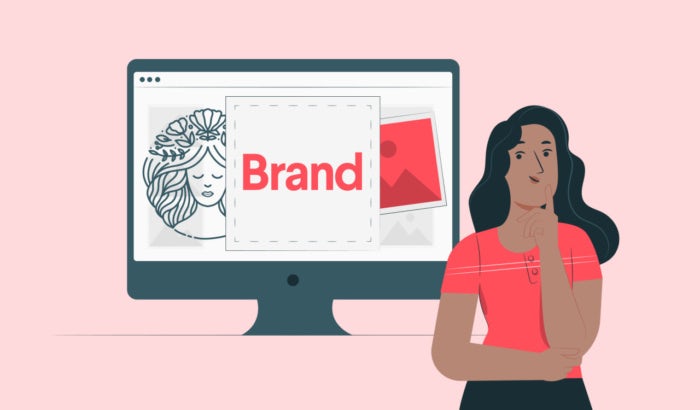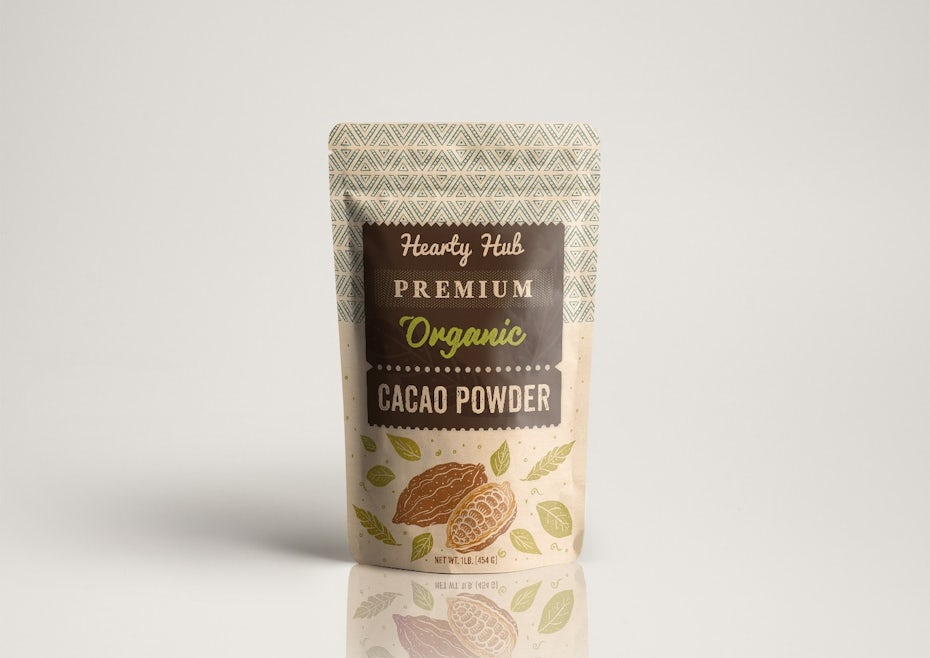How people perceive your brand personality is subjective—but extremely important. Dairy Queen seems nice, don’t they? We wouldn’t mind having them over for dinner. We could probably sit them at the same end of the table as those other beloved brands Dove Soap and Cheerios. They’re not like that boorish Uber—we wouldn’t want to associate with uncouth brand personality types like that.
As consumers, we often have very strong and very personal gut reactions to brands—the same way we do to certain people. We see ads, social media posts and news articles and think, “I have a good feeling about them,” or “there’s something about them that I just don’t like.”

These emotional connections have a direct impact on sales and business. According to Harvard Business School, 95% of purchasing decisions are based on feelings instead of logic. People tend to choose the brands that appeal to their subconscious, or “gut,” so brands that present themselves in a human and personal way do better than brands that rely on statistics or rationality. In other words, having a great product or service isn’t enough, you need a great brand personality to match.
But what does that mean? What is brand personality and how can it improve business? In this guide, we’ll run through the basics of shaping your brand personality, so you know how to put your best foot forward and raise an army of loyal customers. Think of it like charm school for your business optics.
What is brand personality?
—
Brand personality is a set of characteristics attributed to a brand in the eyes of a customer. A brand’s personality is what shapes the public perception of a brand based on how it acts, what is says and what it looks like.
So, when we say “brand personality,” we’re talking about the company’s reputation or demeanor (or the impression that psychotherapists call “felt sense”). Basically, how does the brand come across to both new and old customers?

Just like Dairy Queen may seem nice and Uber may seem creepy (note: these impressions will be greatly influenced by the person doing the assessing) your brand personality can either attract or repel consumers. But when you take a proactive effort, you can use your brand personality to appeal to a target customer group or even break into a new market. The trick is to match the personality with that particular group’s preferences.
But personality alone isn’t enough, just ask everyone not picked for Prom King or Queen. Your brand personality needs to be represented in all your branding endeavors, from your logo to your website to the tone of voice of your customer service reps. If you want your brand to come across as “friendly” or “serious,” you’ll have to adjust your branded materials accordingly.
What makes a brand personality successful
While the approaches, strategies and even the personalities themselves can wildly vary from company to company, the actual goals of brand personality remain consistent for everyone. Looking at branding as a whole, you want your brand personality to satisfy these five areas:
- Authenticity—Your brand personality should always reflect your business goals and company culture. A law firm of old stiff lawyers could not pull off a young and rebellious brand personality. Especially younger consumers are starting to catch on when a company is sincere and when it’s cashing in on a trend.
- Memorability—Especially important for new brands, you need to stand out to be remembered. A funny visual, play on words, or extraordinary gesture can turn an unknown startup into a household name.
- Value—The “substance” of your business: what value do you provide for customers that they can’t get elsewhere? A product type, quality, price or even way to identify themselves? Your brand personality should complement your business model.
- Trustability—Every pizza place in New York claims to be the best, but only one of them can be telling the truth (and it’s Two Boots—I dare you to change my mind). Just like a real person, if your brand lies about who it is people will stop listening.
- Authority—Customers expect the brands they do business with to be experts in their field. A brand personality that confidently and helpfully owns who they are will attract more business.


In the next section, we discuss in detail how you can convey these characteristics in your brand personality. But first, let’s quickly clear up the “brand personality vs. brand identity” confusion.
Brand personality vs. brand identity
By the way the terms “brand personality” and “brand identity” are thrown around, it’s easy to mistake one for the other. But when you get into the nitty-gritty of branding, you realize they’re two different concepts, and understanding the difference can help you make the most out of each.
Your brand personality is the human characteristics of your brand—a happy brand, an energetic brand, a no-nonsense brand, an utterly clueless brand. Your brand identity, on the other hand, is the manifestation of your brand personality, like your logo, your color scheme or the tone of voice you use in your blog. If you understand programming, you can think of brand personality as the back end, the behind-the-scenes stuff, and brand identity as the front end, what the user sees.


As you can tell, the two are very closely linked. For example, take a look at pxlsm’s work for digipanda. After an initial look at their logo, their brand comes across as casual, friendly and approachable—the brand personality. We draw this conclusion from what we see, the imagery of a cute panda bear, and the bright yellow to signify warmth and happiness, the brand identity.
Knowing how your brand personality will be presented helps when initially determining the traits and “vibes” you want to associate with. To better understand the branding process from start to finish, consider the four main components of a brand identity:
- Color scheme—According to color theory, each color elicits a specific emotional response from viewers, which is why brands within the same industries tend towards the same colors. You can read more about the meanings of colors here, or jump straight to how colors apply to marketing here.
- Shapes—Like colors, the shapes you use in branded images like logos can also elicit emotions. For example, circles and curves are more playful and welcoming, but rigid rectangular shapes denote more serious brands. You can read more about the meanings of logo shapes here.
- Typography—How your text looks is almost as important as what it says. The fonts, styles and sizes of your typography can communicate independently of the words they represent. Here’s a discussion about the best and worst fonts to get you started.
- Brand voice—It’s not always about how you look; customers draw conclusions about your brand personality based on how you speak in your social media, websites, blogs, ad, press releases, etc. Read a complete guide on building your brand voice here.
But we don’t mean to get ahead of ourselves, before you start picking out colors and plotting your website, you first need to pin down your brand personality as precisely as possible. That’s not always easy, so next we give you three pieces of advice from the experts.
How to develop the best brand personality for you
—
As we said above, while the goals of brand personality may be the same for everyone, the approaches should be molded by your unique business. In other words, the destination is the same, but how you get there depends on you.
Read the 3 tips below to help you create the best brand personality design for you.

1. Cater to your target customers
Chanel’s sophisticated and exclusive brand personality has served it well for almost a century because it fits perfectly with the high-fashion sense of their target customers, but if you tried that brand personality with a bargain brand like Dollar Tree, it would be a huge disaster.
The top priority in your brand personality is meeting your target customer’s preferences, even more important than your own preferences. Ideally you already have a firm grasp on who your customers are and what they want, but regardless gathering quantitative customer data can reveal insights you never would have guessed on your own.
2. Make a list of adjectives to describe your ideal brand personality
This is a quick exercise designed for first-timers in branding to help get the creative juices flowing. If you’re having trouble deciding on your traits, make a list of adjectives describing your perfect brand personality. Listing words like “youthful,” “energetic” and “passionate,” can help you hone in on the greater personality, and words like “inexpensive,” “convenient” and “user-friendly” can help you solidify your value and carve out a place in your market.
Just remember to keep your target customers in mind, specifically their preferences and expectations. The words on this list should appeal to them more than you.

3. If your brand were a person…
This is a bit on the nose, but it helps to visualize your brand as a living, breathing human to create a brand persona. If you can’t decide what direction to take your brand personality, try to imagine that your ideal brand is a real person and you’re meeting them at a party for the first time. Ask yourself these questions:
- How does your brand greet you? Do they give you an enthusiastic, “Hi, how are you?” or a nonchalant “ ‘sup”? Do they shake your hand formally or go straight in for a hug?
- How does your brand act? Does your brand get straight to the point? Do they like to crack jokes? This can help you understand your brand voice.
- What does your brand talk about? What topics interest your brand? Do they stick to socially-acceptable conversations or do they push limits? Do they spend their time teaching or listening?
- What does your brand wear? Are they dressed for appearances or comfort? How many accessories do they have? What colors do they have? This can provide valuable hints for shaping your visual identity.
Of course these questions don’t answer everything you’ll need for your brand personality, but once you have a solid idea of who your brand is, the rest of the details follow. Use them as a starting point and continue to build on them until you have outlined a complete, comprehensive brand personality for your business.
No brand is an island
—
How people perceive your brand is subjective. But that doesn’t mean you have to leave it to chance. By actively understanding and shaping your brand’s personality your can take your brand reputation into your own hands.
Knowing the brand personality that works best for your brand is one thing, but translating that personality into your logo, website and merchandise is another. Once you know what you’re trying to achieve you can bring your brand personality to life in all aspects of your branding.
Now that you know your brand's personality, it's time to build your design to match.
Our designer community can create it for you!
The post How to create a strong brand personality (and why it’s important) appeared first on 99designs.
How to create a strong brand personality (and why it’s important) posted first on https://www.lilpackaging.com
No comments:
Post a Comment